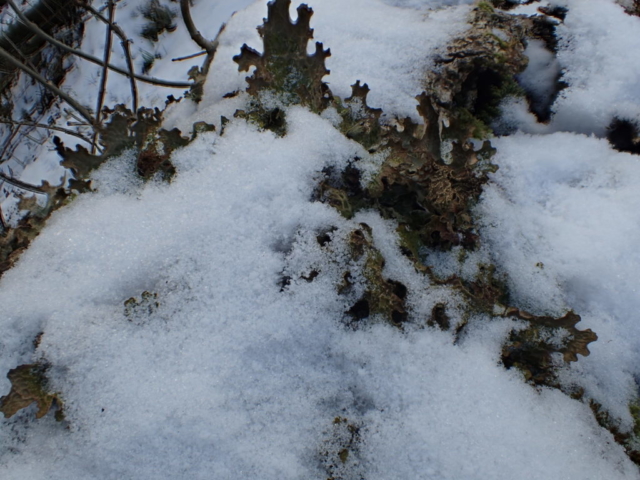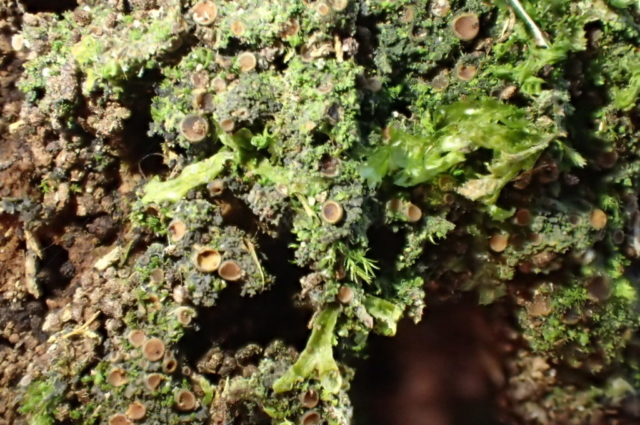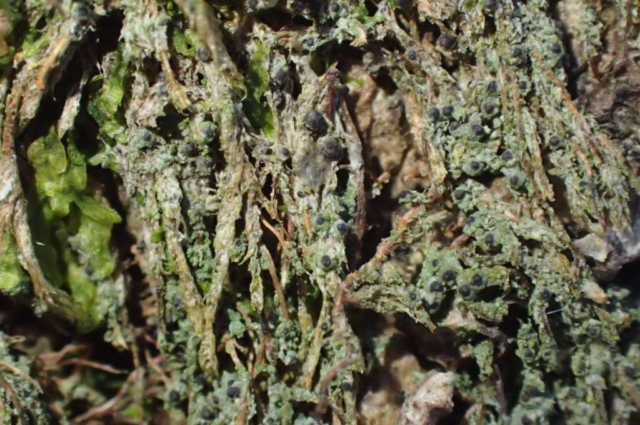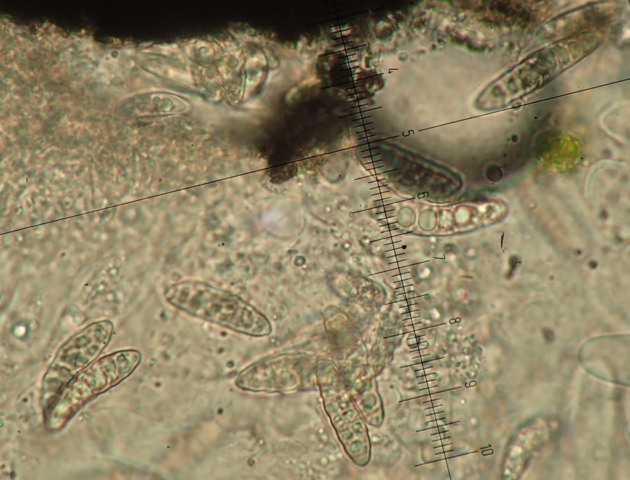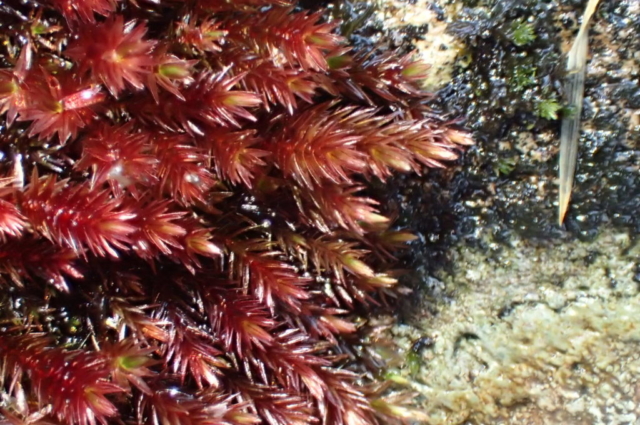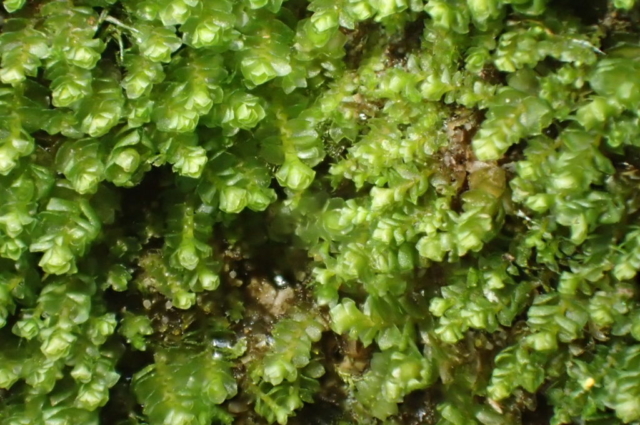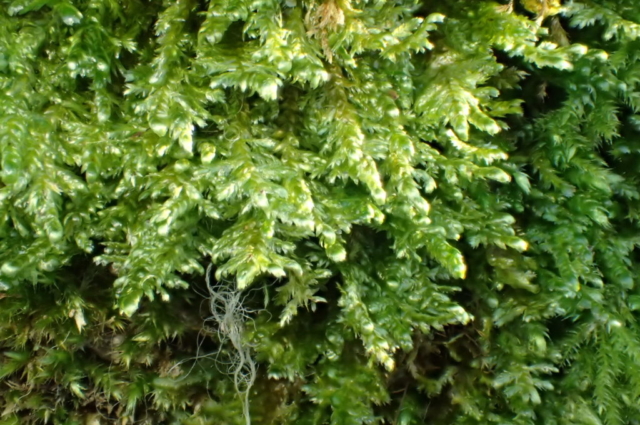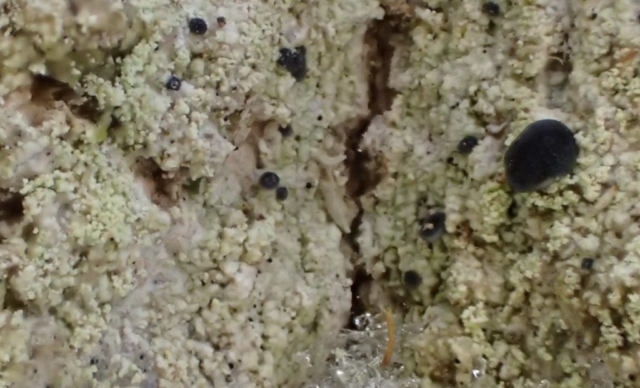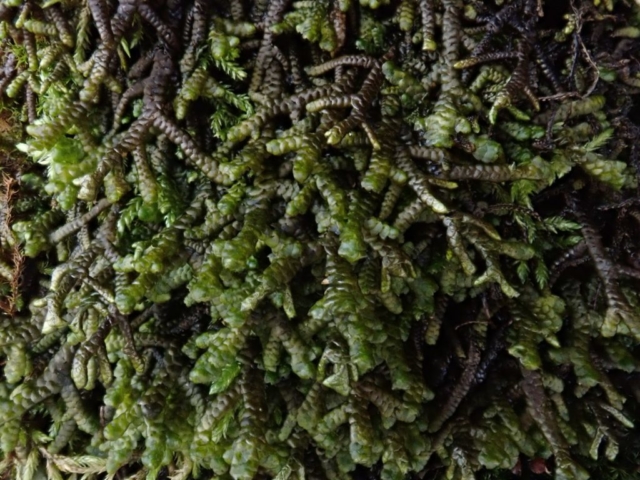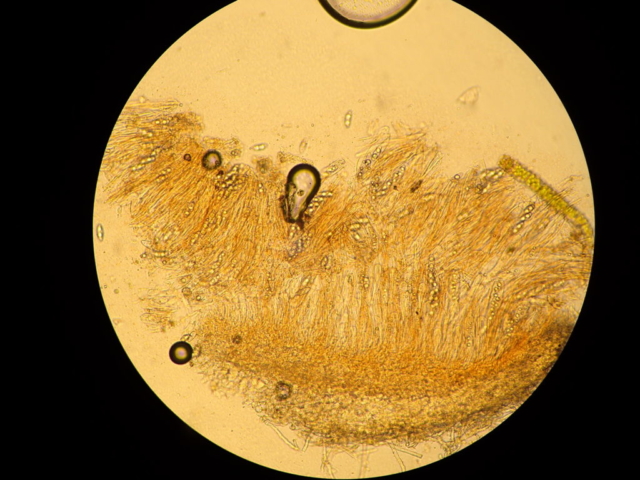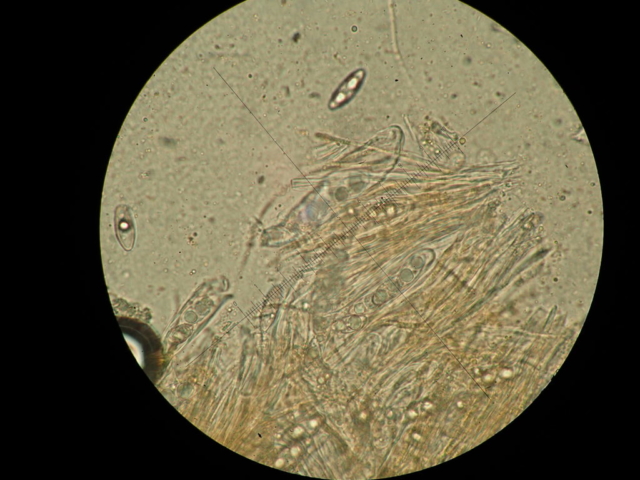Once again, the weather forecast was for sub-zero temperatures, ice and snow. After reassurance from Lee Schofield that the roads to Haweswater were “passable with care” it was decided that the trip could go ahead. We were warmly welcomed by Lee and the rest of the team at the RSPB reserve, and several of them joined us for the day. Since Kerry was the only bryologist to brave the weather, she joined the lichen team for a combined visit, which was very educational on both sides.
We started with a visit to the well-known Lobaria pulmonaria Ash tree across the stream from the farm. Sadly it had lost a large limb a couple of years ago, but this had provided the material for many attempted translocations by Chris and Caz. We visited several of these during the course of the day, and while it is still early days many of them seemed to be doing well.
The breeze in this area was very chilly, so we moved into the more sheltered Mirkside wood, of multi-stemmed hazel with Oak, Ash and Alder. Here we saw Lee’s astonishing discovery of Hazel Glove Fungus, sadly now much eaten by slugs, and accompanied by large quantities of the Glue Fungus which it parasitises. Mycology aside, there were very good assemblages of the typical smooth bark lichens such as Graphis, Arthonia etc., the other Lobaria tree was located and the RSPB team were introduced to the concept of lichen speed (measured in hours per tree). The epiphytic liverworts Frullania dilatata, Metzgeria furcata and Radula complanata were also abundant here. A large patch of Riccardia palmata was found on one of the few logs not covered in snow.
At lunchtime sitting in a wet snowdrift seemed attractive enough, but after some discussion we decided to accept the RSPB’s offer of a warm room with a log fire, tea and coffee, chocolate biscuits and mince pies. Annabel described the future plans for the reserve and for landscape restoration in the surrounding areas. There is fantastic potential but it very much depends on the government sorting out the farm subsidy payments.
After lunch we moved to the sunlit side of the valley, where there is an area of wood-pasture with veteran Ash trees. There were many good representatives of more basic-bark species, a highlight being Normandina acroglypta. The melting snow enabled Kerry to find more bryophytes too, including frequent cushions of Bartramia pomiformis and one patch of Porella arboris-vitae on the crags above the farm.
Overall it was a most enjoyable day, and a site well worth another visit in better weather. Very many thanks to the RSPB for their hospitality and enthusiasm.
John Adams and Kerry Milligan. Photos by John Adams, Chris Cant and Kerry Milligan
Octospora bryophilous fungus note below
Octospora bryophilous fungus
Caz found a distinctive fungus growing on Bryum moss on an ash tree. Chris found spores in a fruit, with 4 or more spores per ascus. The spores were about 30×13μm in size usually with two oil droplets. George Grieff kindly identified it as a known but undescribed/unnamed species which he lists as Octospora sp. Bryum-capillare.
Text and photos: Chris Cant

